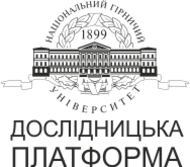№79-21
Construction of the model of a three-phase asynchronous electric motor on the basis of experimental research
V. Tkachov 1 , A. Uzhelovsky1, V. Uzhelovsky1, G. Kravets2
1Prydniprovska State Academy of Civil Engineering and Architecture, Dnipro, Ukraine
2Yevhen PATON applied college of welding and electronics, Dnipro, Ukraine
Coll.res.pap.nat.min.univ. 2024, 79:241–248
Full text (PDF)
https://doi.org/10.33271/crpnmu/79.241
ABSTRACT
Goal. The development of a simplified model of a three-phase asynchronous short-circuit motor with frequency control through imitation modeling.
Research methodology. The proposed methodology involves constructing a model of a frequency-controlled electric motor by combining experimental research, regression analysis, and imitation modeling. Experimental research focuses on determining the dependence of the motor's torque on the supply voltage frequency and load. The obtained data is analyzed using regression techniques to establish statistical relationships with a high correlation coefficient. This enables the development of an imitation model that accurately reflects the motor's dynamic behavior.
Research findings. For the first time, the construction of an imitation model of a frequency-controlled electric drive system is proposed, utilizing modern software and technical tools. The study introduces a simplified model of the reactive resistance torque, which is critical for studying the motor's dynamic behavior. The approach combines experimental torque measurement data with frequency and load dependency to construct a model that enhances the understanding of the electric drive's operational dynamics.
Scientific novelty. A simplified model of a three-phase asynchronous short-circuit motor with frequency control has been successfully developed and studied. This model enables the investigation of the dynamic properties of mechanical equipment under various operating conditions. The imitation model allows for the analysis of transient processes in the electric drive system, thereby providing insights into its performance characteristics.
Practical significance. Based on experimental research, a regression relationship with a high correlation coefficient has been derived for the main characteristics of the electric drive. The developed model, implemented in the MATLAB software package, allows the simulation of transient processes in the frequency-controlled motor system. This makes it a valuable tool for designing and optimizing electric drive systems in various industrial applications.
Keywords: experimental research, frequency-controlled electric drive, regression analysis, imitation modeling, statistical dependency, dynamic characteristics, reactive resistance torque.
References
1. Klyuev, O.V., & Sadovoi, A.V. (2011). Energeticheskie kharakteristiki asinkhronnogo elektroprivoda s dvukhkanalnoi sistemoi upravleniya. Zbirnyk naukovykh prats Dniprodzerzhynskoho derzhavnoho tekhnichnoho universytetu, 2(17), 174–181.
2. Jouili, M., Jarray, K., Koubaa,Y., & Boussak, M. (2012). Luenberger state observer for speed sensorless ISFOC induction motor drives. Electric Power Systems Research, 89, 139–147. https://doi.org/10.1016/j.epsr. 2012.02.014.
3. Alonge, F., D׳Ippolito, F., Fagiolini, A., & Sferlazza, A. (2014). Extended complex Kalman filter for sensorless control of an induction motor. Control Engineering Practice, 27, 1–10. https://doi.org/10.1016/j.conengprac.2014.02.007.
4. Chin-Chih, O., Chun-Jung, C., & Tien-Chi, C. (2010). Modelling and design a power assisted wheelchair used torque observer. International Symposium Computer Communication Control and Automation, 2, 63–66. https://doi.org/10.1109/3ca.2010.5533763
5. Guzinski, J., Diguet, M., Krzeminski, Z.,& Lewicki, A. (2010). Speed and load torque observer application in high-speed train electric drive. IEEE Transaction on Industrial Electronics, 57(2), 565–574. https://doi.org/10.1109/TIE.2009.2029582
6. Popovych, M.H., Lozynskyi, O.Yu., & Klepikov, V.B. (2005). Elektromekhanichni systemy avtomatychnoho keruvannia ta elektropryvody: Navchalnyi posibnyk. Kyiv.
7. Kuznetsov, V., & Nikolenko, A. (2015). Models of operating asynchronous engines at poor-quality electricity. Eastern-European Journal of Enterprise Technologies, 1(8). 37–42. https://doi.org/10.15587/1729-4061.2015.36755
8. Kuznetsov, V., Tryputen, M., Kuznetsova, Y., Babyak, M., Artemchuk, V., & Kovzel, M. (2020). Ways to Improve Power Quality under the Conditions of Industrial Enterprises. 2020 IEEE Problems of Automated Electrodrive. Theory and Practice (PAEP), 1–6. https://doi.org/10.1109/PAEP49887.2020.9240801




